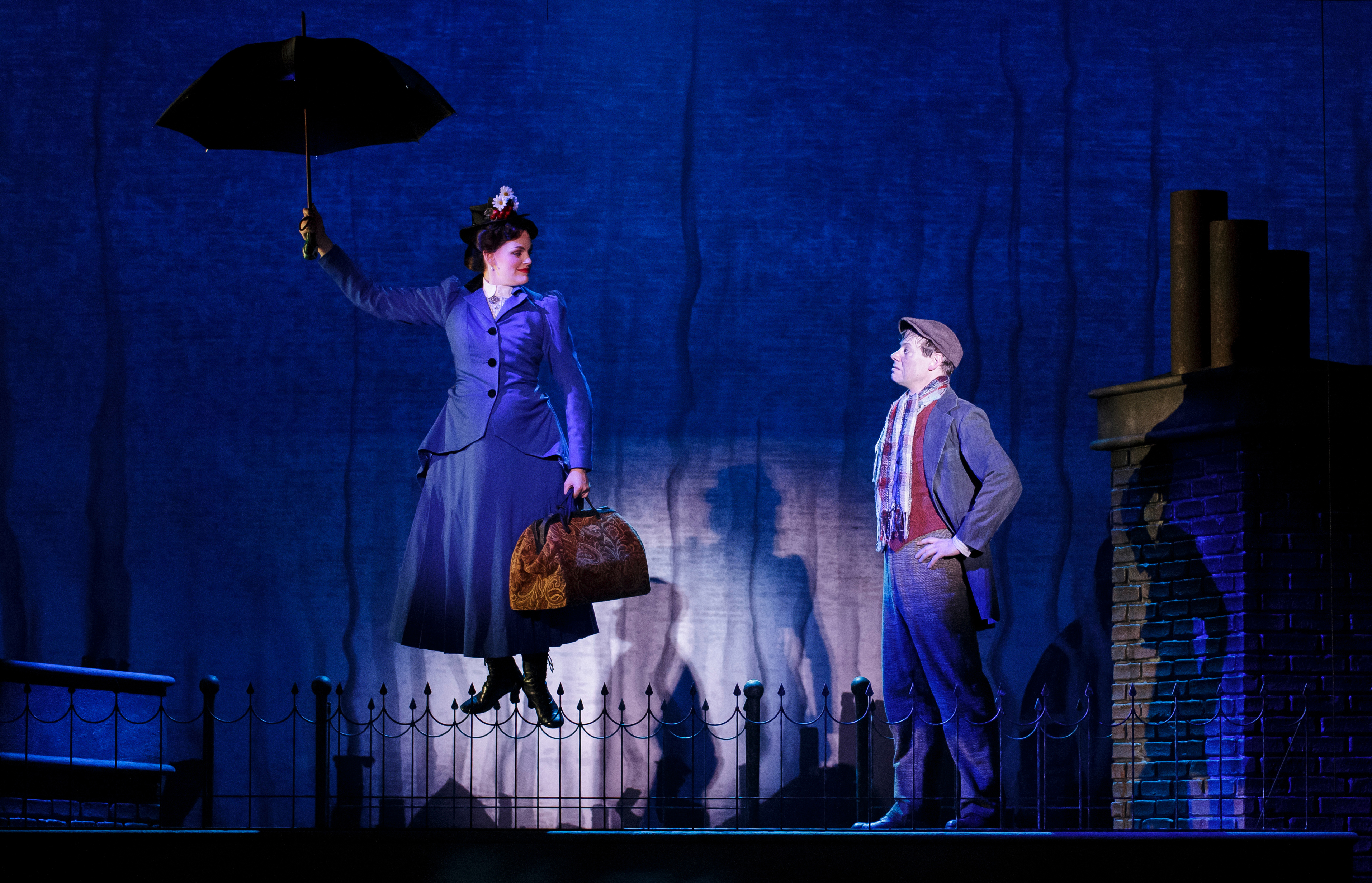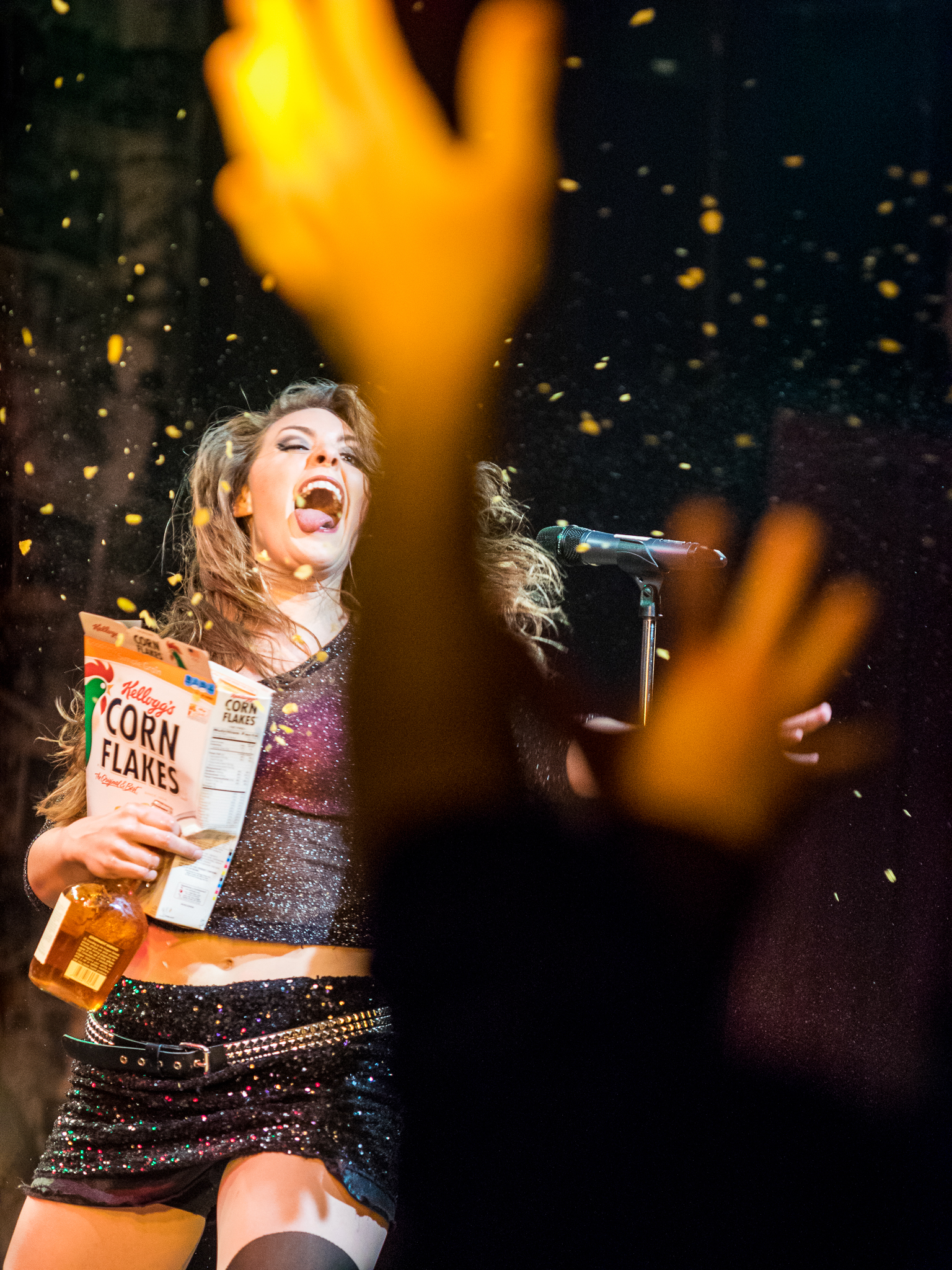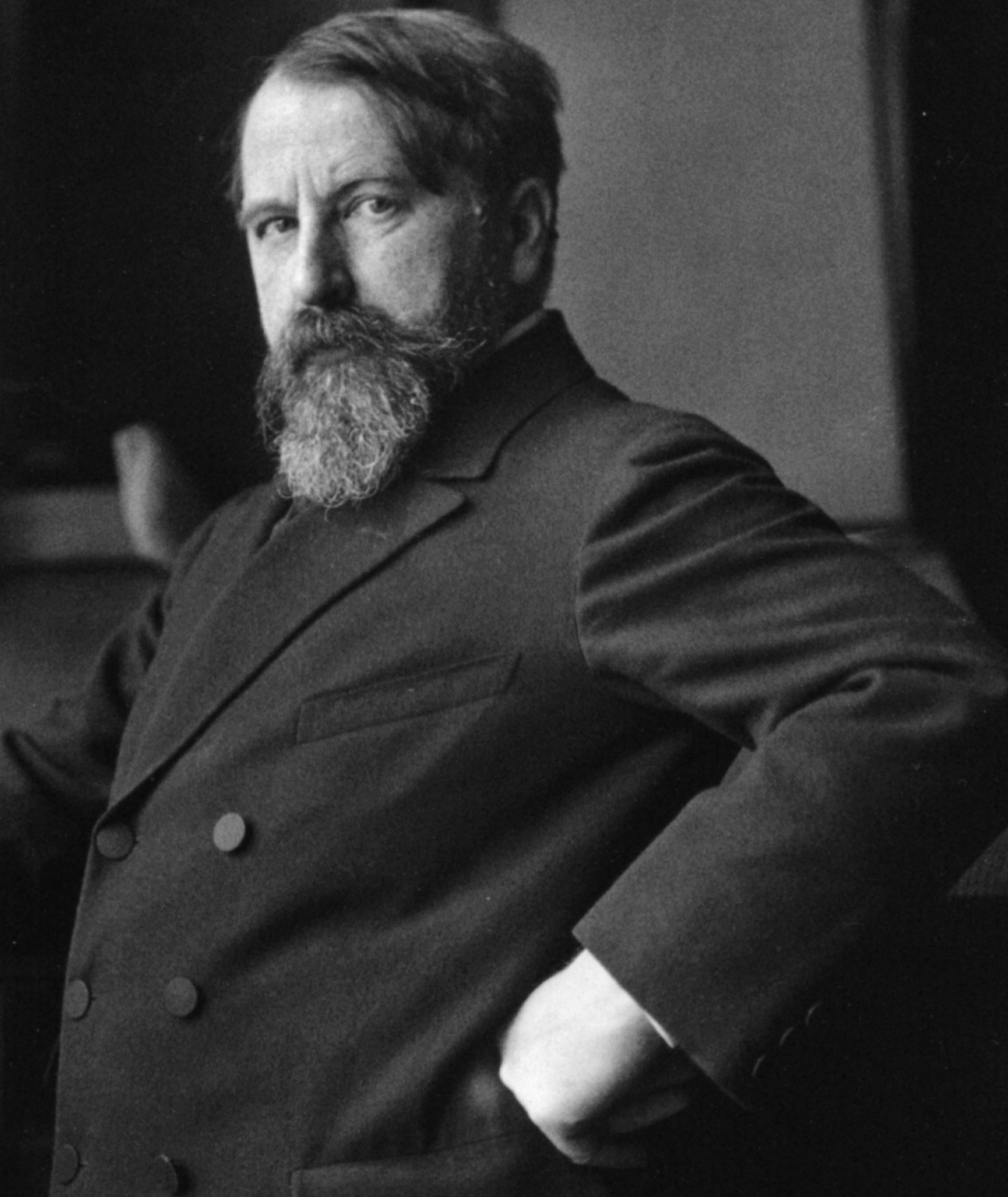Mary Poppins
Village Theatre, 303 Front St. N. (Issaquah), 425-392-2202, villagetheatre.org. $40–$72. Runs Tues.–Sun. through Jan. 4. (Moves to Everett PAC Jan. 9–Feb. 8.)
I savor a side of saccharine with my supernatural. As a child, my DVD enchantment with the 1964 Disney version of Mary Poppins inspired me to read the entire series by author P.L. Travers. So naturally I was predisposed to like this local production of the Disney/Cameron Mackintosh Broadway musical.
As parents will know, after little Jane and Michael Banks turn and burn a string of governesses, an Edwardian version of Super Nanny appears to transform the naughty kids and their unhappy elders with alchemy and adventure. Yet this 2004 adaptation makes the children inordinately impish and their parents surprisingly melancholic. As my theater companion said to me, “It is darker than I remembered.” And perhaps truer to Travers’ intention. Likewise, the script by Downton Abbey creator Julian Fellowes deepens the movie material with characters and scenes from her original books. Still, it’s a musical, meaning cheerful favorites like “Supercalifragilisticexpialidocious” by the Sherman brothers, plus new tunes (e.g., “Practically Perfect” and “Anything Can Happen”) by George Stiles and Anthony Drew.
This ambitious musical commands a considerable cast, sizable sets, and genuine magical feats. Under the decent direction of Steve Tomkins and Kathryn Van Meter, a cast of 30 delivers undeniably determined performances. In the title role, Cayman Ilika finds a Julie Andrews-esque balance of cool and compassion. Among the ensemble, Laura Kenny’s Mrs. Brill steals scenes with her comic relief.
This production is practically perfect—yet even the best-behaved child is bound to have some shortcomings. While Van Meter’s challenging choreography—notably during “Step in Time”—earns its applause, some bush-league blocking had me wondering about the show’s rehearsal time. Instead of using the expansive space for compelling compositions, performers often stand in a slightly staggered line or upstage one another. The scene changes seem clunky, and Scott Fyfe’s set transitions awkwardly from indoors to outdoors. (Why decorate the proscenium with components of the Banks’ house? It’s distracting.)
Not that I would’ve noticed these things as a child, and your kids won’t either. They’ll love the scene in which a kitchen gets trashed—complete with collapsing furniture and sliding objects. Regardless of the medium, Mary Poppins relays the appealing, family-friendly message that everyday life is laced with magic. And that’s why it’s worth the drive to Issaquah instead of hibernating at home with the movie: The onstage illusions trump any experience found on Netflix.
stage@seattleweekly.com








